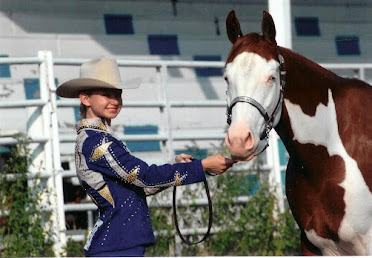 CORRECTLY SHOWING YOUR HORSE AT HALTER CORRECTLY SHOWING YOUR HORSE AT HALTER
HELPFUL TIPS AND INSIGHTS
AQHA Judge & Top Trainer
Mark Sheridan~Cave Creek, AZ
I spend a lot of time showing and judging. I get many ideas for articles from the questions I receive from exhibitors. At the end of long day of judging, I like to take time to note the thoughts and ideas I encountered during the day that would be helpful information to competitors to make their chances of winning in the arena easier, fun and simple. Here are the highlights but please download the full article for all of the insight I can share.
 | |
Image from a 2012 AQHA Show
|
The new class of Performance Halter has hit most of the breeds over the last few years. In addition, versatility ranch classes and various competitions require showing your horse at Halter for breed and open shows and there has been a major increase in people exhibiting their horses in Halter and Conformation classes.
Most of the tips in this article will help make your experience in Halter more enjoyable and more competitive. Most importantly, it will give you the tools that will make it easier for the judges to place you closer to the top of the class ! - Halter class is usually in the morning. It is a great way to make a positive first impression with the judge.This starts with a smile and a confident look. Seeing a person having fun and enjoying what they are doing has a positive effect on other people, and in this case, the judges.
- Reading your rule book in detail, and knowing all of the rules is one of the most important things that exhibitors can do to help their chances of success.
- Know your equipment rules, and make certain that your halter and leads are properly adjusted and fitted to your horse. Make sure that your halter is pulled up and fitted so that it is not hanging loose on your horse's head. I see this at every show that I judge on quite a few horses and it makes me want to walk up and tighten up the halter myself
- It is extremely important to "WALK YOUR HORSE TO THE JUDGE". So often, when an exhibitor walks to the judge, the judge has to step to his left to see the horse track because the exhibitor walks straight to the judge putting the horse a few feet to the judge's left. It is important for the judge to see the horse track at the walk and trot, and if he cannot see them track correctly, he will have to either re-track the horse or move into position to see the horse track.
- Make sure that your horse is broke to trot and leads well, and able to make the sharp turns. It doesn't matter if it's a first time weekend horse show or a five-time World Champion halter horse at the World Show; if we can not properly view and judge them, they have to be placed with that in mind.
- Make sure that you space your horse with enough room to make it easy for the judge to walk around him. This cuts down on the chance of horses kicking and, more importantly, allows the judge to have enough space to get a good view of your horse from the front and back. Use common sense.
- One of the most important ones is very simple, yet so many people struggle with it: mouthing your horse. If you show a mare or stallion, it is mandatory that you show their teeth or "bite" to the judge. A judge must be able to see where the incisors line up to determine if they are parrot mouth or have any other mouth issues. The proper way to do this is to put one hand on their mouth and separate upper and lower lips to expose the bite. I find it amazing how many people fight their horses with this simple maneuver.
- My next tip is constructive and important. At most of the shows that I judge, there is always a horse or two that is acting up and rearing, spooking, misbehaving, and/or will not set up or trot. The comment I hear time and time again from the exhibitor is, "This is his first show". I am very patient in these situations and I try to be helpful, however, if these horses went to a show a few times just for the ride and learned to be around different venues and conditions, they would show so much better.
- When I show in the Halter class, I put the number on my hip for two reasons. One of the most important issues that exhibitors must realize, is that if we cannot see their numbers, and if it very difficult for us to find their numbers, it can become a challenge. It is important for exhibitors to always make their numbers easy for the judges to see. OPEN FULL PDF ARTICLE HERE
Please keep in mind that these are my personal opinions and not those of any breed associations. I judge alongside many talented and knowledgeable professional horseman and horsewomen, and feel that these are the most helpful and useful tips that will aid in future success with your hores. I also suggest contacting the AQHA to find a talented Professional Horseman in your area who can help you with whatever guidance you might need for your horse, regardless of the breed, event, or type of training. Feel free to contact me anytime for thoughts or questions regarding this article or past articles and enjoy riding, teaching, and learning with your horse! Do your homework and keep practicing good habits. ♞Until next time, Mark
|